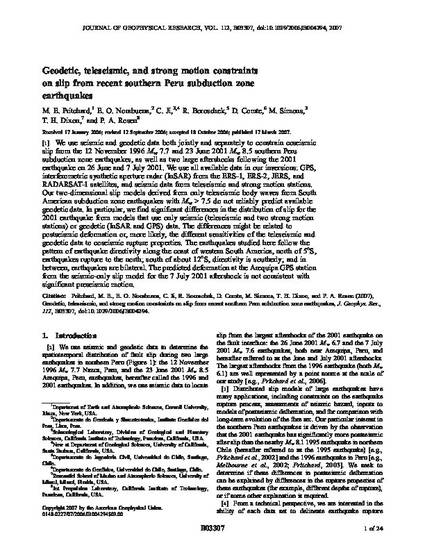
- subduction zone earthquakes,
- joint inversions,
- South America
We use seismic and geodetic data both jointly and separately to constrain coseismic slip from the 12 November 1996 Mw 7.7 and 23 June 2001 Mw 8.5 southern Peru subduction zone earthquakes, as well as two large aftershocks following the 2001 earthquake on 26 June and 7 July 2001. We use all available data in our inversions: GPS, interferometric synthetic aperture radar (InSAR) from the ERS-1, ERS-2, JERS, and RADARSAT-1 satellites, and seismic data from teleseismic and strong motion stations. Our two-dimensional slip models derived from only teleseismic body waves from South American subduction zone earthquakes with Mw > 7.5 do not reliably predict available geodetic data. In particular, we find significant differences in the distribution of slip for the 2001 earthquake from models that use only seismic (teleseismic and two strong motion stations) or geodetic (InSAR and GPS) data. The differences might be related to postseismic deformation or, more likely, the different sensitivities of the teleseismic and geodetic data to coseismic rupture properties. The earthquakes studied here follow the pattern of earthquake directivity along the coast of western South America, north of 5°S, earthquakes rupture to the north; south of about 12°S, directivity is southerly; and in between, earthquakes are bilateral. The predicted deformation at the Arequipa GPS station from the seismic-only slip model for the 7 July 2001 aftershock is not consistent with significant preseismic motion.
Journal of Geophysical Research, v. 112, issue B3, art. B03307
Copyright 2007 by the American Geophysical Union.
Available at: http://works.bepress.com/timothydixon/117/
